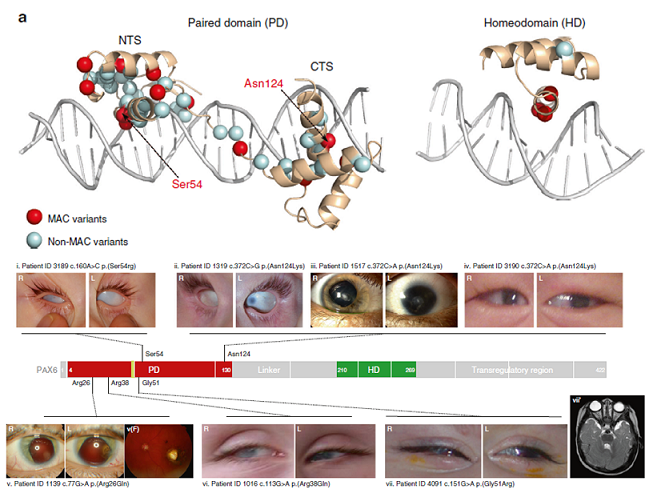Interpreting PAX6 mutations in microphthalmia
Protein-DNA interactions hold key to worse-than-null effects in microphthalmia: November 2019

Genetic changes (mutations) that alter one copy of the PAX6 gene typically cause an eye condition called aniridia, which is characterised by failure of the iris to develop and visual problems.
Researchers at the MRC Human Genetics Unit, University of Edinburgh, have identified a distinct class of PAX6 mutations which cause a much more severe effect on eye development, with individuals being born with small and structurally abnormal eyes. Each of these mutations is a missense mutation, altering only one of the 422 amino acids in the PAX6 protein.
The altered amino acids are in the segments of PAX6 protein that bind to DNA and control the activity of other genes. By analysing the PAX6 DNA sequence from more than 1000 individuals with structurally abnormal eyes, we found these types of mutations in 15 severely affected individuals.
The seven individuals with the most severe eye defects were found to carry a mutation that alters a specific amino acid either at position 54 or 124. These two amino acids make direct contact with DNA and we could distinguish these variants from those causing typical aniridia (or causing no effect at all) using our understanding of the 3D structure of PAX6 protein and how stably it is bound to DNA.
This approach improves our predictions of the effect of missense changes on DNA binding in all similar proteins, and thus to make more accurate diagnoses in many different diseases.
Links
Original article: https://doi.org/10.1038/s41436-019-0685-9
FitzPatrick research group - Genetic Causes of Developmental Disorders
Marsh research group - Computational Protein Biology


